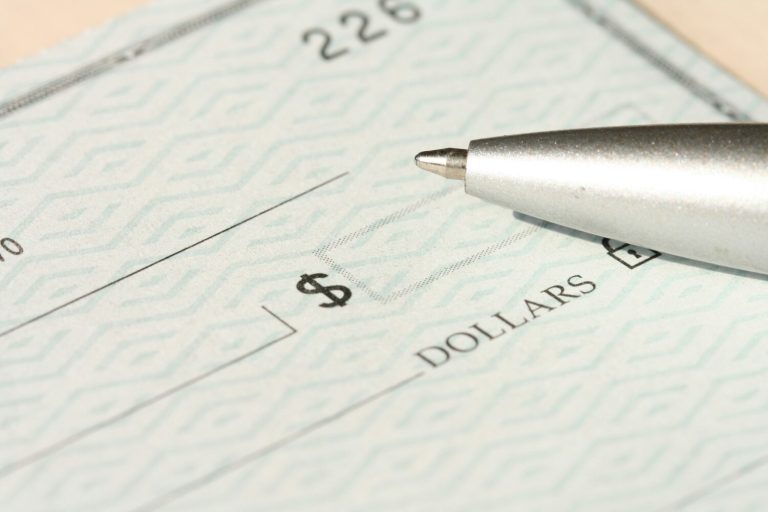We often hear generic advice about saving money—“Pay yourself first,” “Cut out the lattes,” or “Stick to a budget.” But what does actual data say about how people manage their money? The truth is that most Americans are facing a financial reality that’s more precarious than it seems on the surface. From low emergency fund balances to paycheck-to-paycheck living, the numbers don’t lie or flatter. These 14 statistics about saving money might make you look at your paycheck in a whole new way and could give you the push you need to start treating every dollar with more purpose.
1. 63% of Americans Are Living Paycheck to Paycheck
This stat isn’t just a headline. It’s a wake-up call. Nearly two-thirds of the population can’t cover their bills without the next paycheck, which shows how vulnerable many households are. Unexpected expenses like car repairs or medical bills can send finances into a tailspin. Living paycheck to paycheck also limits your ability to save, invest, or plan for the future. This statistic reveals how crucial it is to build even a small buffer to break the cycle.
2. Only 44% of Adults Could Cover a $1,000 Emergency with Savings
Emergencies aren’t hypothetical. They’re inevitable. And yet, less than half of Americans are financially prepared to handle a relatively minor emergency expense. That means the other 56% may rely on credit cards, loans, or even payday lenders when the unexpected strikes. This lack of a basic emergency fund leads to long-term financial strain and increased debt. Creating even a modest savings cushion can be the difference between stability and a financial spiral.
3. The Average American Saves Just 3.4% of Their Income
While the ideal savings rate is often touted as 15% or more, most people fall dramatically short. A savings rate of 3.4% barely keeps pace with inflation and leaves little room for retirement or large financial goals. This stat highlights how much opportunity is lost each year to inadequate saving. It’s not just about how much you make. It’s about how much you keep. Increasing your savings rate, even by a few percentage points, can change your financial trajectory.
4. 40% of Millennials Have Less Than $1,000 in Savings
Despite being one of the largest working generations, many millennials are financially fragile. High student loan debt, rising housing costs, and wage stagnation contribute to this trend. But it also underscores a need for better financial education and smarter money habits. Without savings, any disruption—job loss, illness, even a move—can create cascading hardship. The earlier this group builds saving momentum, the more powerful the long-term compounding effects.
5. 80% of U.S. Workers Say They’re Stressed About Money
Financial stress affects more than just your wallet. It impacts mental health, relationships, and productivity. If 4 out of 5 people are carrying money anxiety to work every day, it’s more than a personal issue; it’s a societal one. This stat sheds light on the invisible burden poor money habits place on people’s lives. Prioritizing saving, even in small amounts, can help reduce stress and provide a sense of control. Money may not buy happiness, but financial security buys peace of mind.
6. More Than Half of Adults Don’t Use a Budget
Without a plan, your money controls you, not vice versa. Budgeting isn’t about restriction; it’s about clarity. Yet more than half of adults admit they don’t track their spending or follow a budget at all. This often leads to overspending, debt, and missed savings opportunities. Knowing where your money goes is the first step toward making it go further.
7. The Median Retirement Savings for Ages 35–44 Is Just $40,000
Considering that retirement can last 20–30 years or more, $40,000 won’t get most people very far. This stat reveals that many are behind on saving for the future and that the time to act is now, not later. Compound interest rewards the early saver, not just the high earner. Even small, regular contributions today can lead to large balances tomorrow. Delaying savings only makes catching up more difficult and stressful down the line.
8. Nearly 25% of Adults Have No Savings at All
It’s not uncommon, but it’s deeply risky. No savings means no buffer for job loss, medical bills, or family emergencies. This group is often one expense away from a real financial crisis. The solution starts with a single step: setting aside just a few dollars a week. Building the habit of saving is more important than the amount at first.
9. Automatic Savings Plans Increase Saving Rates by Over 50%
One of the most effective hacks for saving? Take yourself out of the equation. Automating transfers to savings accounts makes it easier to build wealth without willpower. Studies show that people who automate their savings put away significantly more money than those who don’t. Out of sight, out of mind—but in a good way. Set it, forget it, and watch your savings grow.
10. Households with a Budget Save an Average of $300 More per Month
This simple discipline pays off. Budgeters aren’t just tracking. They’re saving. That extra $300 a month could fund an emergency account, pay down debt, or kickstart an investment plan. If you’re struggling to save, a budget may be the missing tool. It gives your money a job and helps you prioritize what matters.
11. The Average American Spends $314 per Month on Impulse Buys
That’s nearly $4,000 annually—often on things we don’t remember buying. Impulse purchases sabotage savings goals more than most people realize. Recognizing this pattern is the first step to changing it. Creating friction in the buying process, like waiting 24 hours, using cash, or uninstalling shopping apps, can help. That money could instead go to savings, investments, or paying down debt.
12. Couples Who Discuss Finances Weekly Are 50% More Likely to Meet Their Savings Goals
Money is emotional, and financial communication matters. Regular conversations build alignment, accountability, and motivation. Partners who check in weekly are more aware of their spending and more committed to shared goals. This stat proves that teamwork is a savings multiplier. Even five-minute check-ins can dramatically improve financial outcomes.
13. Emergency Fund Recommendations Have Increased to 6 Months of Expenses
The old advice used to be 3 months, but after recent economic volatility, experts now suggest six. This shift acknowledges that layoffs, illness, and inflation can have prolonged effects. Having half a year’s worth of expenses in savings may sound daunting, but starting small gets you there. Every $100 saved is one less crisis away from panic. Set mini-goals to build your safety net gradually.
14. Workers Who Save Through Direct Deposit Save 2x More Than Those Who Don’t
When money goes straight into a savings account (before you even see it), staying disciplined is easier. Direct deposit into a separate savings account removes temptation and builds consistency. Savers who do this end up with twice the balance, on average. It’s a simple change with dramatic results. If your employer offers a split deposit, take advantage today.
Turn These Stats Into Your Savings Strategy
The numbers don’t lie; if they’ve made you uncomfortable, that’s good. Change doesn’t start with perfection; it starts with awareness. Whether you’re saving nothing, saving inconsistently, or just want to boost your progress, these stats show exactly where the cracks in the system are.
Take one of these insights and turn it into an action this week—set up an auto-transfer, review your impulse spending, or start tracking your budget. Your paycheck has more potential than you think. It just needs direction.
Which of these statistics hit home for you, and what’s one small change you’re willing to make to shift your savings habits today?
Read More:
8 Savings Commandments the Wealthy Secretly Ignore (and Still Get Rich)
250 Money Saving Tips You Haven’t Heard Of
Read the full article here









